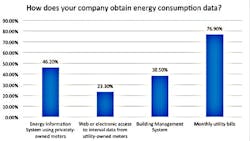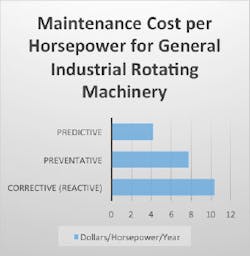The Internet of Things (IoT) is not just the latest buzzword to circulate through board rooms of manufacturing conglomerates. The IoT is a proven strategy, a developing trend, and an innovative technology. More importantly, the IoT is enabling manufacturers to improve efficiencies, reduce waste and increase profits.
As the ecosystem of connected devices grows, as more corporations adopt its technologies, while it can still offer a competitive edge: this is the time to reap IoT’s benefits.
The ever-growing network of systems and devices with IP addresses that communicate with each other is creating a revolution in manufacturing. Thanks to the IoT, General Electric anticipates $19 trillion in profits and cost savings projected over the next decade.
Stefan Ferber, vice president of automotive component manufacturing powerhouse, Bosch, has described the IoT’s effects on the manufacturing space, “The Internet of Things allows for a new way of organizing industry production: by connecting machines, warehousing systems and goods, we can create smart production systems that basically control each other without requiring any manual intervention.”
How are Manufacturers Benefitting from the IoT?
The American Society for Quality (ASQ) surveyed manufacturing companies that have digitized their processes and found astounding results:
- 82% increased efficiency
- 49% experienced fewer product defects
- 45% increased customer satisfaction
Connecting manufacturing devices and aggregating the data created is enabling manufacturers to reduce overhead, conserve resources, increase profits and optimize operational efficiencies.
There are many ways the IoT helps in optimizing manufacturing: inventory control and supply chain management help companies become more efficient. But one of the greatest advancements made possible by the IoT is energy management.
IoT and Energy Efficiency for Manufacturers
Energy is often one of the largest expenses for manufacturers; and, unfortunately, it is also one of the most ambiguous. In a recent energy management survey conducted by Panoramic Power, nearly 77% of companies reported obtaining energy consumption data, at least partially, from monthly utility bills or energy monitoring tools with limited data points.
Monthly utility bills are typically delivered approximately 2 weeks after the end of the billing cycle. They often report energy use for entire factories. While this information may be handy for the finance team, it does little by way of identifying waste or enabling reduction of consumption.
Enter IoT
Taking advantage of advancements in device connectivity, manufacturers can now track energy consumption patterns at the device level. By tracking each piece of machinery on the floor, managers and executives get granular visibility into energy consumption, as well as actionable insight about waste, available efficiencies, impending equipment failures, regulatory compliance and more.
Resource Utilization: Real-time energy profiles allow manufacturers to detect off-hours consumption, optimize manufacturing production schedules, identify anomalies, and capitalize on opportunities for savings.
Benchmarking: By benchmarking similar pieces of equipment or comparable locations, manufacturers uncover systems that are not functioning properly to detect hidden operational inefficiencies and energy waste.
Predictive Maintenance: When eliminating resource-intensive preventative maintenance and transitioning to data-backed predictive maintenance, manufacturers get alerts for service when service is needed, based on recognized unusual energy usage patterns, thus avoiding the high costs equipment downtime.
Efficient Production: Technological and organizational changes result from optimizing manufacturing processes and the systems running the plants to create the same (or greater) outputs with more efficient energy use.
Behavioral Changes: By arming managers with energy consumption data, they can diminish wasteful habits in their teams and instill behavioral change in the corporate culture.
Management Models: By aligning with corporate social responsibility goals and Lean Manufacturing, Six Sigma, or other management models, energy management programs are trackable and their ROI is verifiable.
Operational Efficiency and Profitability: The operational efficiencies made possible by the IoT in general (and device-level energy management in particular) immediately affect the bottom line for manufacturers.
Examining only the predictive maintenance programs made possible by IoT, manufacturers can save significantly over a preventative maintenance schedule. They can eliminate machinery failure, which is costly, as well as its associated downtime, which may be even more costly.
Without IoT, facility managers sometimes must defer maintenance, which can result in safety, health and environmental implications (and costs!).
But the benefits of the IoT go far beyond a new system of maintenance.
With device-level energy consumption data, manufacturers reduce their consumption and, therefore, their energy spend.
The automated aggregation, benchmarking, and insights empower decision-makers to act quickly and make better, more profit-conscious decisions.
Manufacturers are on the Right Track
According to the American Council for an Energy Efficient Economy (ACEEE), manufacturing continues to represent a vital component of the United States economy, accounting for about 14% of gross domestic product. The manufacturing sector was responsible for almost a third of both national energy consumption and greenhouse gas emissions in 2007.
Manufacturing greats like Dow Chemical “aim to improve the lives of 1 billion and deliver $1bn in cost savings and new cash flow for the company.” Smaller manufacturers like AkzoNobel, a leading global paints company and a major producer of specialty chemicals, have created value propositions based on helping their customers meet sustainability targets.
Accomplishing these kinds of commendable goals is made possible with the information made available through the Internet of Things.
What is the Future of IoT in Manufacturing?
Before the industrial revolution, manufacturers could not envision a future with an assembly line. That was the innovation that changed the face of global manufacturing back then.
The next such innovation is the Internet of Things.
If connected systems seemed like science fiction 20 years ago, like a competitive edge in today’s manufacturing ecosystem, in the future they will be a widespread, fundamental manufacturing must-have.
We expect more data to be gathered, more analyses to be made, more insights to be gleamed, and more efficiencies to be realized. Manufacturers that accept this reality and allow the IoT to permeate their processes, will be the ones who leverage the benefits and reap their share of the $19 trillion in projected profits and cost savings.
Yaniv Vardi is Chief Executive Officer at Panoramic Power, the leading provider of device level energy management solutions. Yaniv is a seasoned executive with close to two decades of leadership experience in the Enterprise Software Solution Industry. As CEO of Panoramic Power, he oversees the day-to-day operations of the company as well as provides vision, strategic direction and focused execution for the company.






